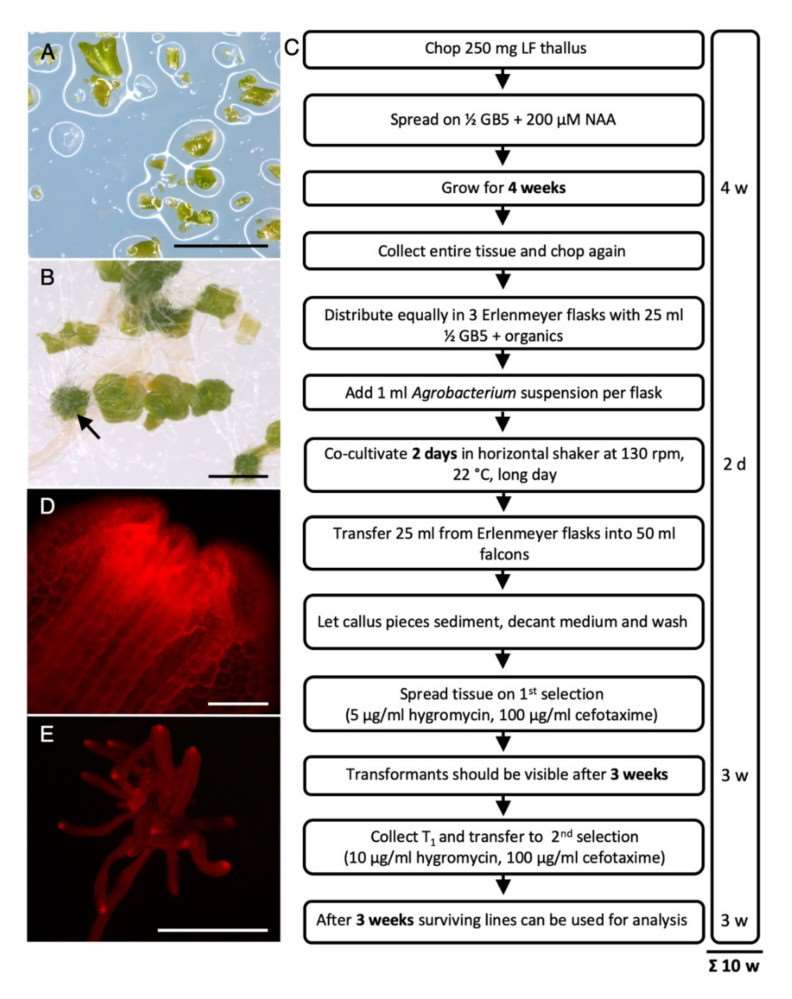The genus Riccia fluitans encompasses about 150 species and is the most diverse genus in the order Marchantiales. Riccia fluitans is a striking aquatic moss usually found in mild environments and is characterized by floating hyphae that periodically diverge into equal branches. It can also grow in terrestrial habitats with different morphological types as well as different habitats. Therefore, Riccia fluitans is an ideal model for studying the molecular mechanisms of water-to-land transition. Scientists have successfully established transformation protocols for Riccia fluitans that make it suitable for genetic analysis. Research in plant genetics and molecular biology has greatly improved our understanding of Riccia fluitans development, adaptation, and evolution.
 Fig. 1. Scheme of the R. fluitans 001TC transformation procedure. (Althoff F, et al, 2020)
Fig. 1. Scheme of the R. fluitans 001TC transformation procedure. (Althoff F, et al, 2020)
Lifeasible is an industry leader in plant genetic transformation and is proud to offer cutting-edge genetic transformation services for Riccia fluitans. Our experts develop a robust and efficient transformation program for Riccia fluitans that allows the introduction and expression of exogenous genes in this plant species. Our protocol builds on the knowledge gained from previous studies on transformation techniques for Marchantiales and takes into account the unique characteristics of Riccia fluitans, an amphibious Marchantiales.
Lifeasible is committed to providing cutting-edge genetic transformation services for Riccia fluitans. Our optimized transformation protocols utilize Agrobacterium-mediated transformation to ensure efficient and stable gene integration and expression in Riccia fluitans. Contact us today to unlock the genetic potential of Riccia fluitans and accelerate your research on the molecular mechanisms of plant adaptation to changing environments and the transition from water to land.
Reference:
Lifeasible has established a one-stop service platform for plants. In addition to obtaining customized solutions for plant genetic engineering, customers can also conduct follow-up analysis and research on plants through our analysis platform. The analytical services we provide include but are not limited to the following:
STU-CRISPR System Improves Plant Genome Editing Efficiency
April 19, 2024
Application of Exosomes in Facial Beauty
April 12, 2024